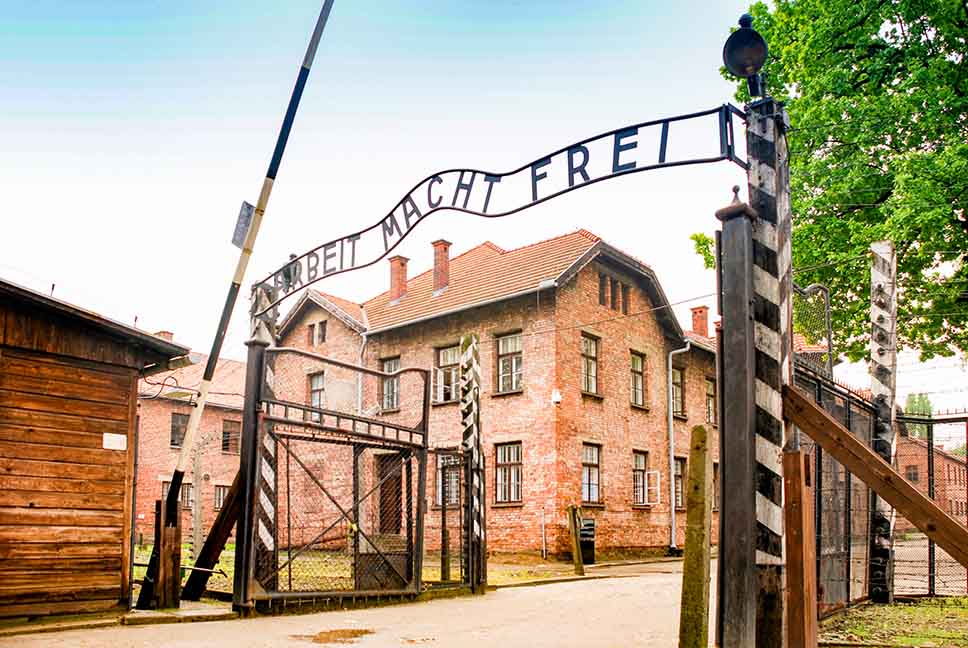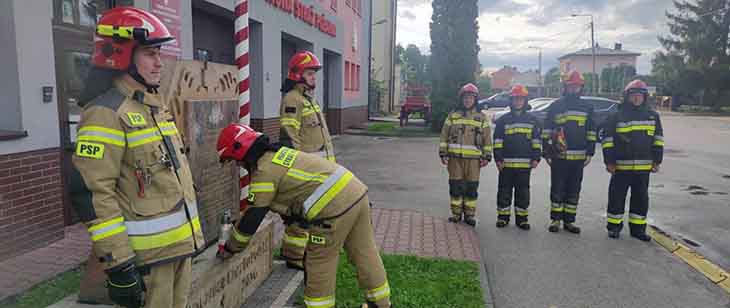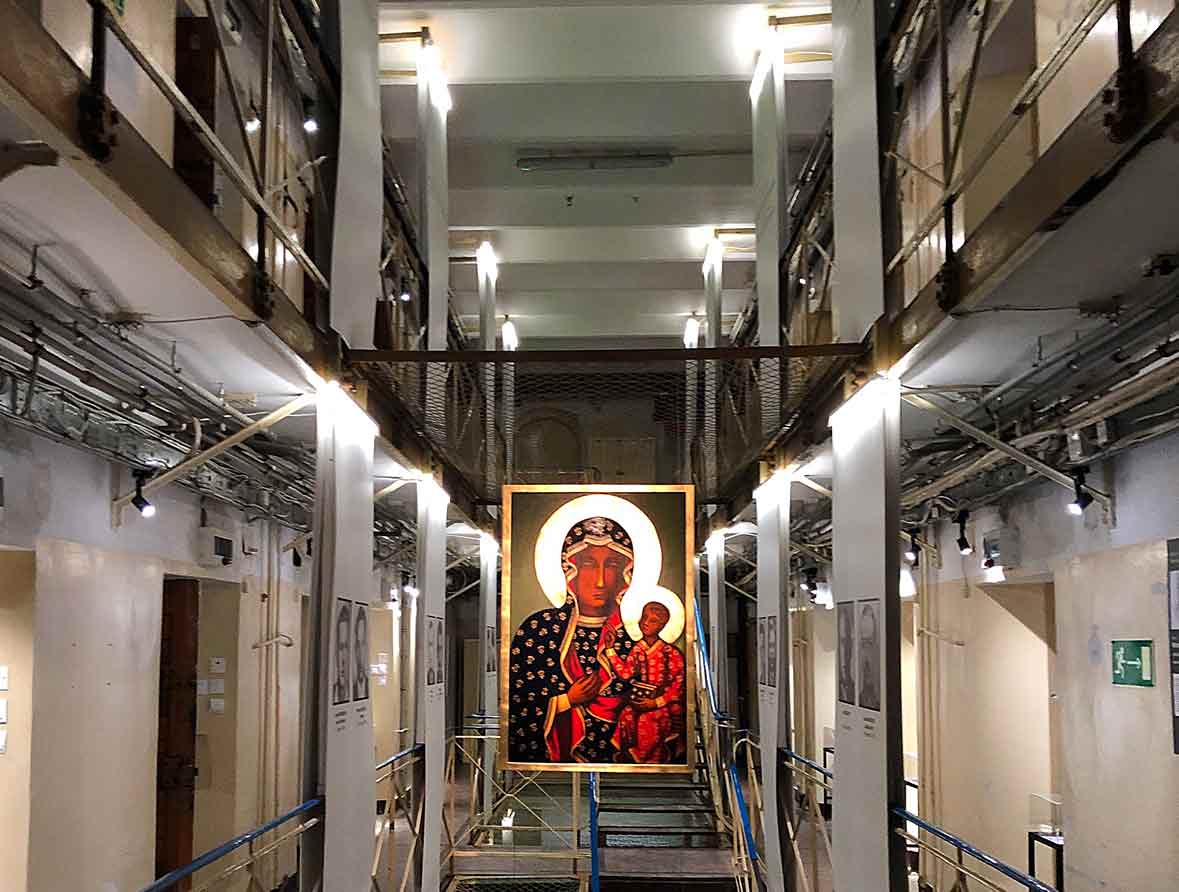Pawiak was a prison that no longer exists in Warsaw, which was built by the Russians in the years 1829–35. The building is situated between Dzielna and Pawia (Peacock) streets (hence the name), built according to the design of Henryk Marconi and Count Fryderyk Skarbek. The building of the women's prison, commonly known as Serbia, which during the Russo-Turkish war, served as a military hospital, adjoined the main building of the prison.
We are proud and fierce behind the bars.
Time will not crush our hearts!
We will laugh under the whistle of their whips.
Nothing will conquer us anymore!Because our torment is great and holy,
Tomorrow shines with victory
Although the cruel fate of our wings has bound us
The greatness of the nation is us!We, who rot in prison gray days,
We will survive these terrible days.
White-and-red banners we raise,
Woven from martyrdom and blood
"The prison anthem" by Józefa Radzymińska, a prisoner of Pawiak in 1941. [5]
A Museum Since 1965
In the cellars, which have survived to this day, of the no-longer existing prison, since 1965, there is a Museum with numerous memorabilia from the period of the persecution of the Polish nation.
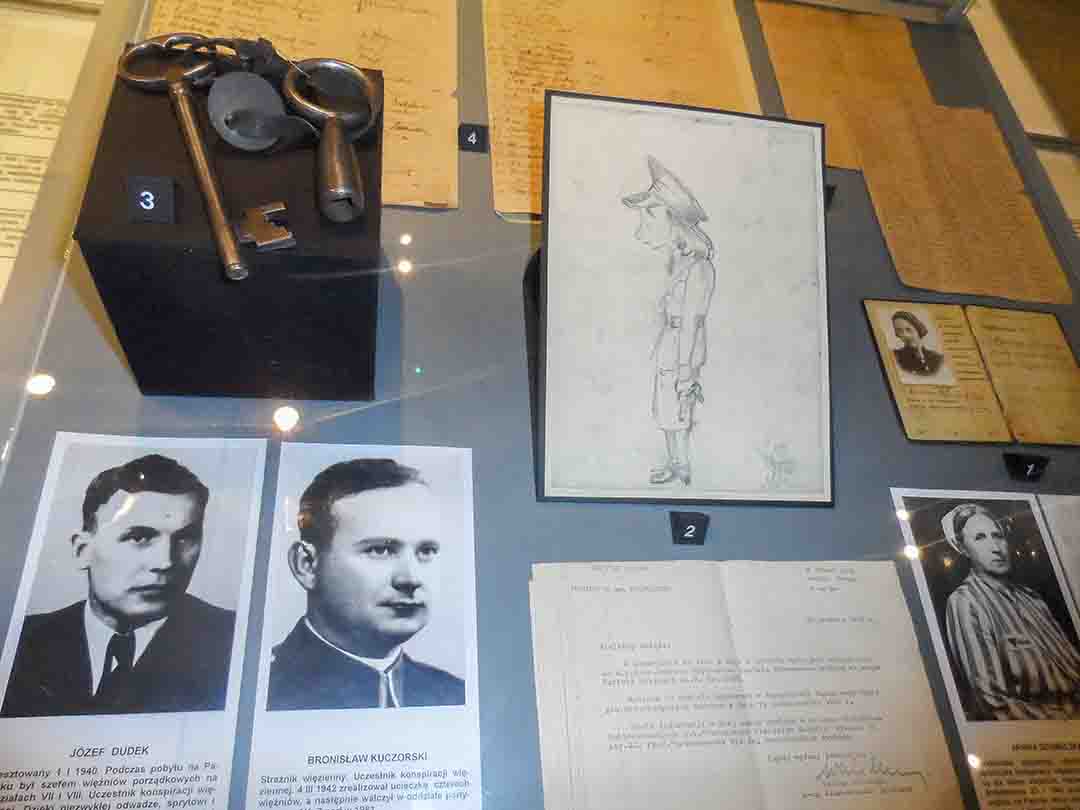
Photographs of Pawiak prisoners, keys to the prison cell, drawing-caricature of the prison guard of the women's ward.
In the Pawiak prison during the partitions, political prisoners were held whenever there was not enough space in the Warsaw Citadel and in the police prison located in the Old Town Hall. Pawiak served as an investigative prison for political prisoners with male and female detachments, serving the Russian invaders in the years 1863-1918 to intimidate the people detained there with a series of brutal tortures.
A Prison for Polish Heroes
During the partitions, members of the National Government, insurgents taking part in the November and January uprisings, as well as activists of workers', national and people's parties were imprisoned in Pawiak.
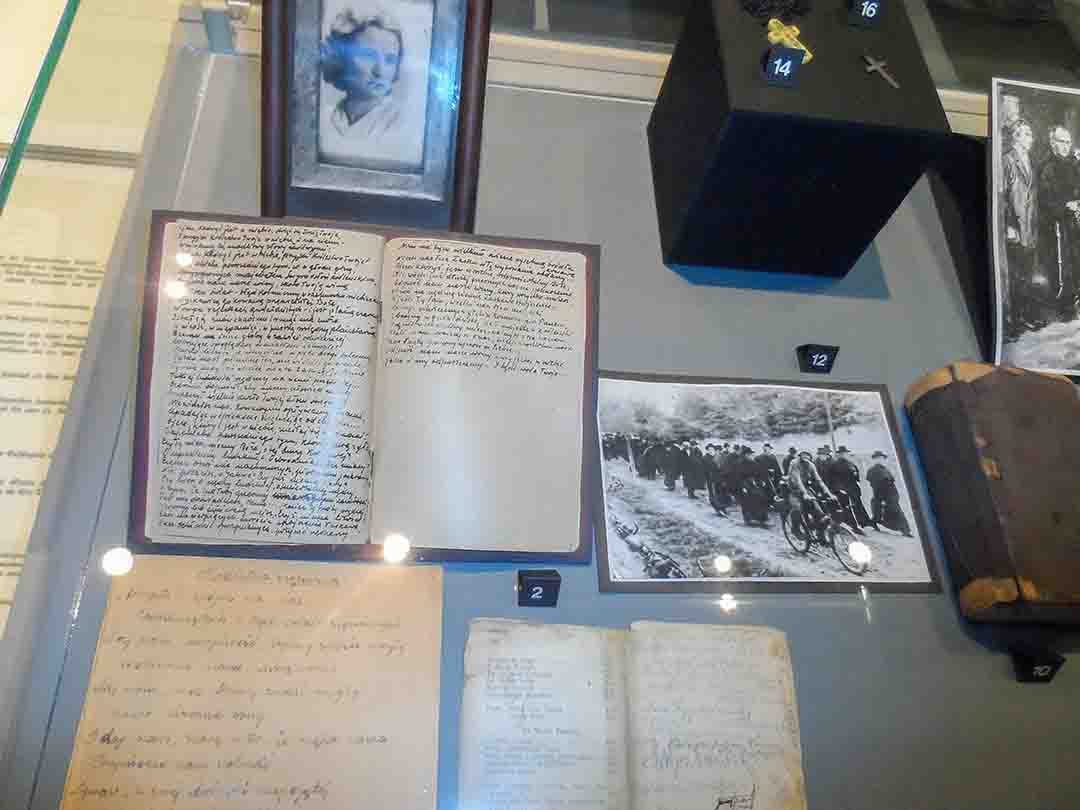
Photographs of prisoners, a prisoner's diary, poems.
During the revolution taking place in the Kingdom of Poland in 1905, Pawiak was the main political prison for its participants. It was then that the action of freeing ten Pawiak prisoners, held upon a death sentence, took place on April 24, 1906. This action was carried out by the PPS Combat Organization, under the command of Jan Gorzechowski, pseudonym Jura.
Interwar Period
Until the end of the Russian rule in the Kingdom of Poland, the Pawiak functioned both as a criminal and political prison. In the interwar period, however, Pawiak performed its function as a pre-trial detention center.
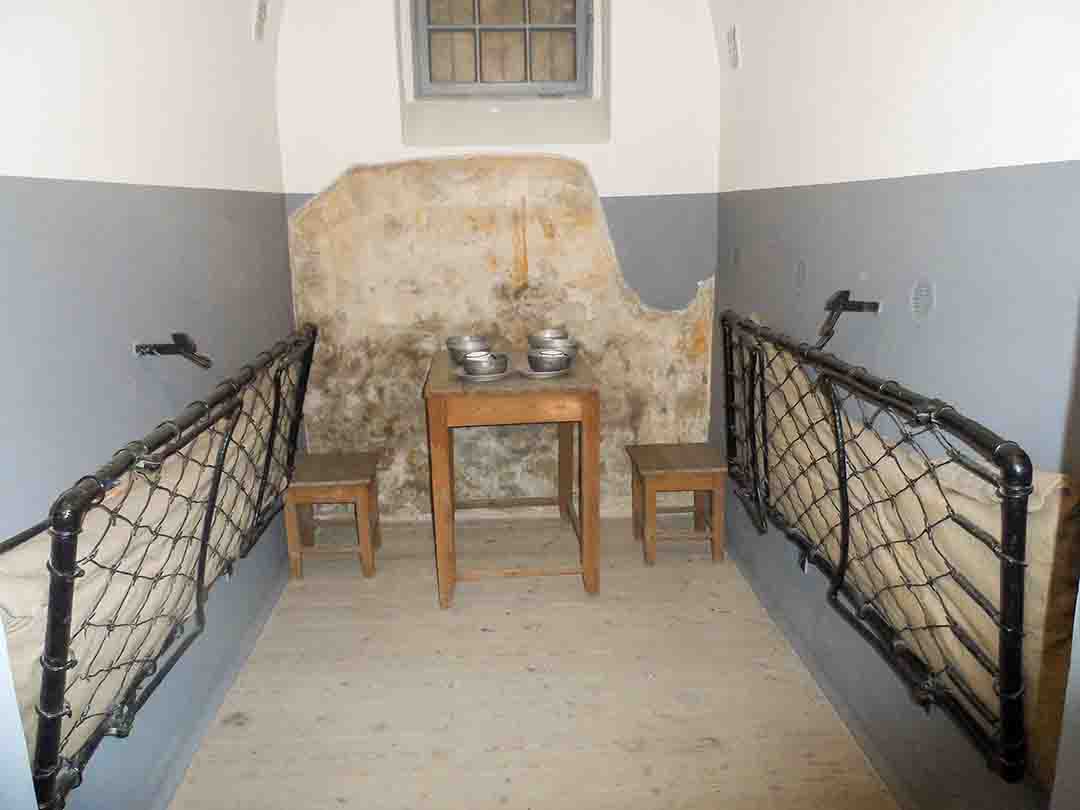
A prison cell and its accommodations.
After the beginning of the German occupation, sometimes known as the fourth partition of Poland, the prison was systematically expanded, at the request of the German Prison Board, which demanded that cells be prepared for 2,200 prisoners.
Everyday Bestiality
Despite the specified maximum capacity of this prison, more than 3,000 people were often held in Pawiak. Pregnant women were also held there, subjected to brutal cruelty. During the ongoing war, about fifty children were born in the women's prison.
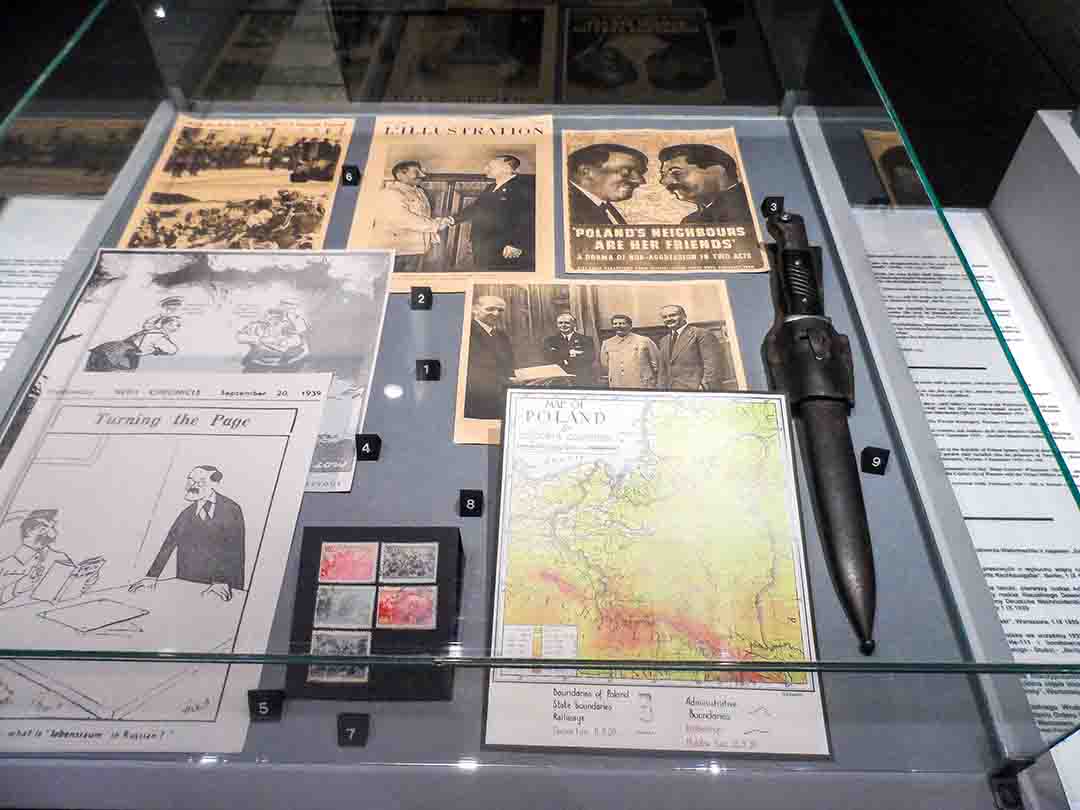
Pre-war maps, postage stamps from the war period, front pages of newspapers published just before the war.
During World War II, a total of 100,000 men and 20,000 women were imprisoned in Pawiak. The largest group were men aged 25-50 and adolescents aged 15-20. There have been cases of arrests of people over 80 and children under the age of 8. Even a boy yoear-and-a-half-old was arrested as a hostage for his parents who were in hiding.
The First Prisoners of WWII
The first prisoners were brought to Pawiak on October 2, 1939 and placed in the part of the prison that had survived the German bombings during the September Campaign. The first transport consisted of 163 prisoners. This was a prison where prisoners-of-war were held against international law.

A portion of black bread that the prisoner had as his daily ration.
The conditions in the prison were very difficult; the average daily food requirement was about 500 calories, which was conducive to mass illness and deaths from exhaustion. The cells were overcrowded, they were full of various vermin, and the prison authorities demanded that proper cleanliness be maintained without providing adequate means to accomplish this.
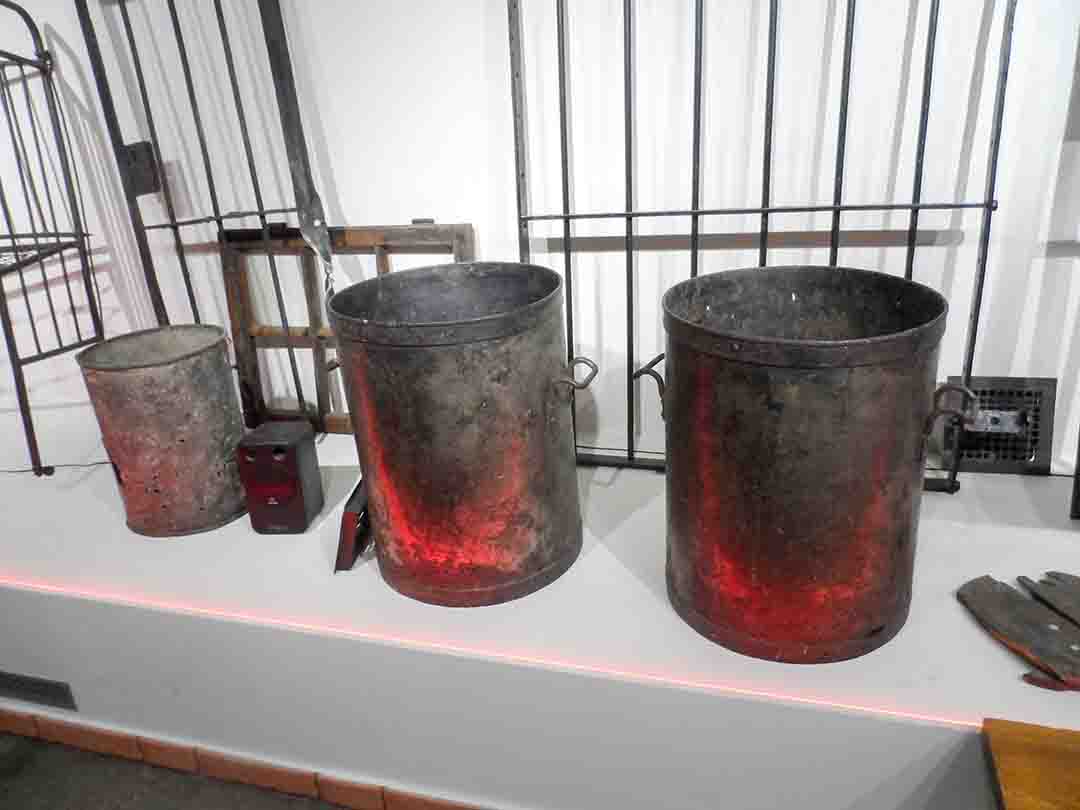
Vessels for extrements, the so-called "Toilets".
People arrested in street round-ups, members of the resistance movement and political prisoners, whom the prison perpetrators loved to abuse, were also imprisoned in Pawiak.
"Rudy"
Among others, Jan Bytnar, pseudonym "Rudy", was held in the Pawiak prison. He was a tireless scout and at the same time an activist of the Home Army, freed on March 26, 1943 in a daring action called "Action Under the Arsenal". Despite being released, "Rudy" died within a few days of his wounds and numerous injuries. It should be emphasized at this point that prisoners who were more involved in political activity were shot, for example in the Palmiry forest, or were transported en masse to concentration camps scattered throughout Poland, as well as in the German Reich.
A Special Visit
On April 29, 1940, Reichsfurher SS Heinrich Himmler visited the Pawiak prison. On May 2, 1940, over eight hundred prisoners were first sent to the German concentration camp in Sachsenhausen, and three months later, the first transport of prisoners departed from Pawiak to KL Auschwitz.
Conspiracy Activity
Polish underground organizations operated in Pawiak, which managed to save a certain number of prisoners from being shot. Among the German prison staff, the commandant of Pawiak, Franz Burkl, was particularly cruel, a pervert and morphinist, who was the first to start the brutal murder of prisoners. However, he was liquidated by members of the Parasol (Umbrella) Battalion following the sentence of the underground court in assassination on September 7, 1943, for which the Germans murdered 20 Pawiak prisoners in retaliation.
On October 1, 1943, another torturer of Pawiak, Ernst Weffels, the head of the female section of the said Serbia prison, was liquidated in a similar attack, but the atrocities committed against people imprisoned in Pawiak did not end. Today, this place is sacred to us and, even though its walls are silent, the tell a story of their past.
The History of the Japanese Doll "Taika Kiwa"
Ms. Dorota Panowek, Media Specialist from the Museum of Independence in Warsaw, told Kuryer Polski a story that we want to share with our readers. It concerns Kamila Żukowska, a prisoner in Pawiak. Mrs. Kamila Żukowska was born on January 18, 1905. From an early age, she was interested in Japanese culture. In her wardrobe she had a kimono and a fan, which were favorite elements of her outfits.
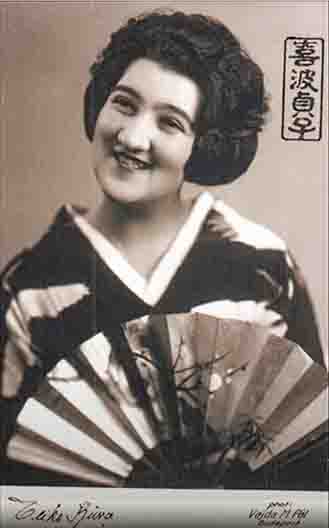
Teiko Kiwa (Source: YouTube [6])
She felt akin to a Japanese woman, especially in her specific behavior and appearance. She had a small figure, gentle body movements and, above all, shiny black hair. She liked opera a lot, especially "Madame Butterfly" performed by the Japanese singer Teiko Kiwa. Together with her husband, Eugeniusz, and another man, she ran a hairdressing salon. With the outbreak of World War II, Ms. Kamila began to work in the underground. She quickly became a member of the Union of Armed Struggle. In her hairdressing salon, she secretly copied the Polish underground press. Unfortunately, a "colleague", a co-owner of a barbershop, who turned out to be a Gestapo informant, found out about Kamila's underground activities. On the night of June 18-19, 1940, Kamila Żukowska, her husband, sisters Irena Wilczyńska and Danuta Golenia, along with her husband, were arrested and placed in the Pawiak prison.
Difficult Prison Conditions
The conditions life in prison were very difficult for them. First of all, the cells were overcrowded and lousy. Starvation rations and the constant system of German abuse of inmates took a huge toll on human life.
In order to overcome the torments of everyday life in prison, and to forget for a moment about the dangers and death from everywhere, the prisoners undertook various activities according to their own talents and interests. For example, they made chess figures or rosaries from bread, they embroidered napkins, or made rings or beads from various materials found in the cell or smuggled into the walls of the Pawiak. This was often done with the help of Polish guard personnel who helped the inmates in all possible ways.
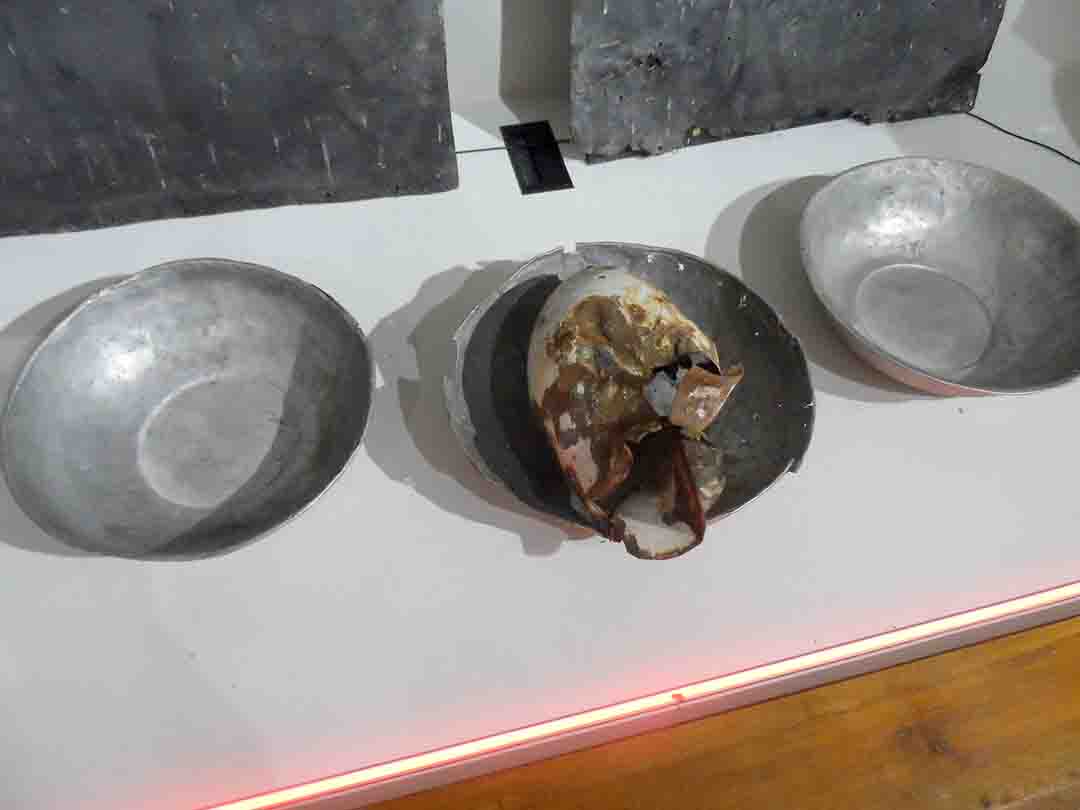
Plates and a water jug.
Gifted with manual skills, Kamila Żukowska, following the example of other prisoners, also began to create various types of items, including: dolls and animal figurines from what she had at hand, for example, from cloths and strings. Among the things she made at Pawiak, of special significance is a small Japanese doll, which was later handed over to the family with the attached letter: “My beloved Niutka. I finished the doll for you at the last minute. The Japanese girl is standing and put her on the piano. Call her Teiko Kiwa."
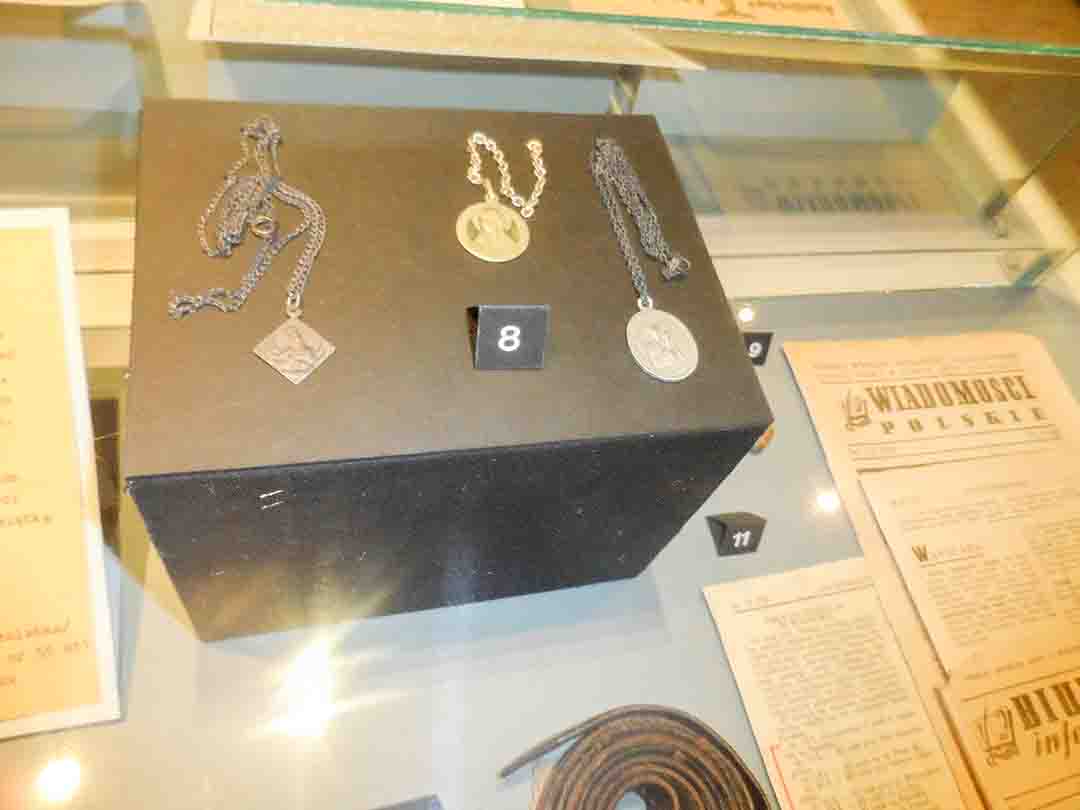
Prisoners' medallions, old newspapers.
On September 27, 1941, Mrs. Kamila was transported to the KL Ravensbrück concentration camp. On February 14, 1942, she returned to Pawiak, and on May 28, 1942, she was murdered in a mass execution in Magdalenka, a small town near Warsaw. Her fate was shared by her husband Eugeniusz, who died in the KL Auschwitz extermination camp. Sisters and brother-in-law were released. The Japanese doll survived and was in the possession of Kamila Żukowska's niece, who changed her name from Teiko to Taika and, in 1976, she donated it to the Pawiak Prison Museum.
Another Story for Kuryer Polski
The Pawiak Prison Museum has received a unique exhibit, which is a baby jacket. It was sewn in Pawiak in 1944. Its donor was Mr. Mariusz Wituski, son of Mrs. Irena Wituska, arrested and imprisoned in the Pawiak prison on December 10, 1943, for her underground activity in the Department of the Home Army Headquarters. For some time, the future mother, Mrs. Irena, was in isolation, then she worked in a potato farm.
On July 31, 1944, she gave birth to son Mariusz and, two hours after giving birth, with her son dressed in the aforementioned jacket and a group of mothers with babies born in Pawiak, she was released from the prison. Before the birth of the child, co-inmates from the cell of Irena Wituska sewed a white jacket as a gift for the future mother.

Mr. Mariusz Wituski's jacket, sewn for him by prisoners from batiste handkerchiefs. Mr. Mariusz was born in Pawiak.
The material came from batiste handkerchiefs, which the prisoners used as cloth for the newborn baby. This garment was carefully stored for nearly 78 years as a precious memento, first by Mrs. Irena, and then by Mr. Mariusz, who donated them to the collection of the Museum of Independence in January 2022. The exhibit is a priceless trace of memory and testimony of the bonds between female prisoners.
Stories narrated to us by Mrs. Dorota Panowek, Media Specialist at the Museum of Independence in Warsaw were used in this article.
Unless noted otherwise, photos by the Author.
Translation from Polish by Andrew Woźniewicz.





